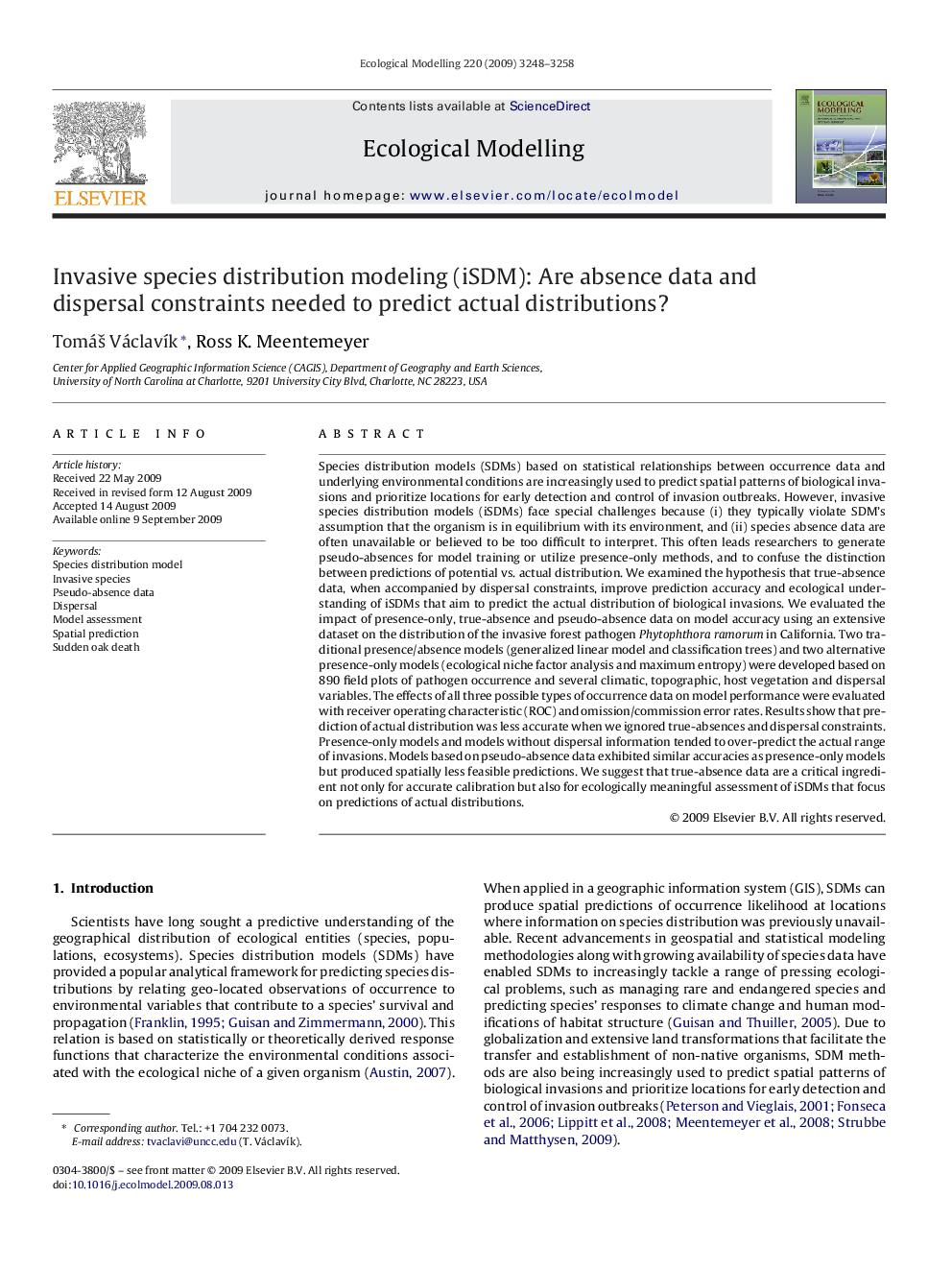| Article ID | Journal | Published Year | Pages | File Type |
|---|---|---|---|---|
| 4377567 | Ecological Modelling | 2009 | 11 Pages |
Species distribution models (SDMs) based on statistical relationships between occurrence data and underlying environmental conditions are increasingly used to predict spatial patterns of biological invasions and prioritize locations for early detection and control of invasion outbreaks. However, invasive species distribution models (iSDMs) face special challenges because (i) they typically violate SDM's assumption that the organism is in equilibrium with its environment, and (ii) species absence data are often unavailable or believed to be too difficult to interpret. This often leads researchers to generate pseudo-absences for model training or utilize presence-only methods, and to confuse the distinction between predictions of potential vs. actual distribution. We examined the hypothesis that true-absence data, when accompanied by dispersal constraints, improve prediction accuracy and ecological understanding of iSDMs that aim to predict the actual distribution of biological invasions. We evaluated the impact of presence-only, true-absence and pseudo-absence data on model accuracy using an extensive dataset on the distribution of the invasive forest pathogen Phytophthora ramorum in California. Two traditional presence/absence models (generalized linear model and classification trees) and two alternative presence-only models (ecological niche factor analysis and maximum entropy) were developed based on 890 field plots of pathogen occurrence and several climatic, topographic, host vegetation and dispersal variables. The effects of all three possible types of occurrence data on model performance were evaluated with receiver operating characteristic (ROC) and omission/commission error rates. Results show that prediction of actual distribution was less accurate when we ignored true-absences and dispersal constraints. Presence-only models and models without dispersal information tended to over-predict the actual range of invasions. Models based on pseudo-absence data exhibited similar accuracies as presence-only models but produced spatially less feasible predictions. We suggest that true-absence data are a critical ingredient not only for accurate calibration but also for ecologically meaningful assessment of iSDMs that focus on predictions of actual distributions.
